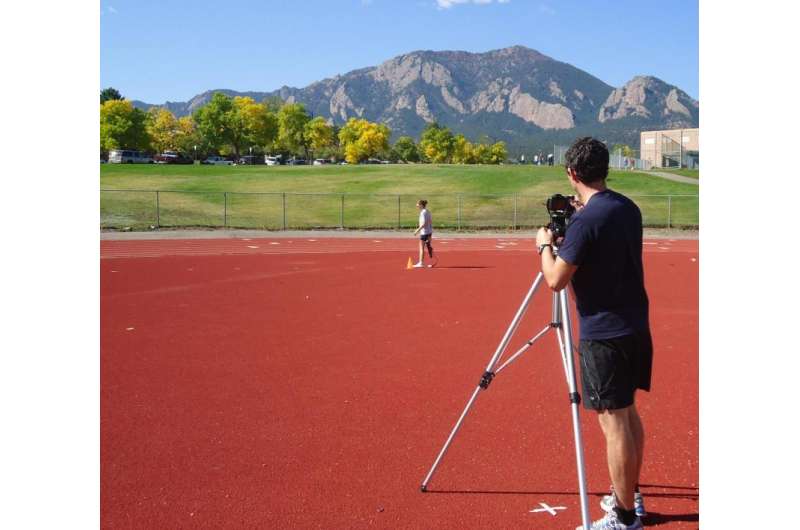Study shows how Paralympic track sprinters are slowed by curves

A University of Colorado Boulder study shows that when rounding curves, Paralympic sprinters wearing left-leg prostheses are slowed more than athletes with right-leg amputations—a disadvantage that could cost them dearly in official competition.
The study showed lower left-leg amputee athletes sprinting in the inside lane of an indoor track ran about 4 percent slower than athletes with right-leg amputations. Based on that, the researchers estimate a 0.2 second difference in an outdoor 200-meter race, said CU-Boulder Research Associate Paolo Taboga, chief study author.
"What surprised me the most was the large effect that running on the inside lane of curve had on these elite Paralympic sprinters," said Taboga of the Department of Integrative Physiology. "A 4 percent reduction in speed during a competitive sprint event could mean the difference between a gold medal and no medal at all."
A paper by Taboga and CU-Boulder Professors Rodger Kram and Alena Grabowski, both in the Department of Integrative Physiology, was published in the Journal of Experimental Biology.
For the study the CU-Boulder research team brought in 11 left or right below-the-knee amputee Paralympic sprinters, both men and women, from the United States and Germany, as well as six non-amputee sprinters. The participants were timed and filmed running on a straight section of an indoor oval track, running on the curve counter-clockwise (standard protocol for track and field races) and running the curve clockwise.
The Paralympic sprinters in the study wore their own customized, J-shaped, blade-like prostheses made of carbon fiber similar to those worn by former Olympian and Paralympic champion Oscar Pistorius. The athletes were filmed with a high-speed video camera that recorded their motions at a rate of 210 frames per second.
The research indicated the performance of Paralympic sprinters was impaired by their reduced ability to generate enough force with left their left-leg prostheses while running counter-clockwise on the inside of a track curve, said Taboga. The athletes had a shorter stride frequency and longer "contact time" between the blade and the track surface, and were not able to compensate by using more rapid leg-swing times, he said.
Taboga suggested that in order to make the Paralympic sprint races more fair, left-leg amputees running on a curve should be allowed to run in the outside lanes, perhaps lanes five through eight. He said he ultimately would like to help design more efficient lower-leg prostheses for use not only by athletes but for all people with leg amputations seeking to become more active and improve their quality of life.
The CU-Boulder study is believed to be the first ever to systematically measure the biomechanics of curve running in athletes with leg amputations. Taboga likened the recruitment of world-class athletes for the CU-Boulder study to using Formula 1 race cars rather than stock cars in order to push the limits of speed.
"In 1999 we studied non-amputees sprinting on curves and proposed a new explanation for why curves slow our running speed," said Kram. "Seventeen years later it is very satisfying to verify our older biomechanical explanation with this unique data set."
Perhaps someday leg prostheses will electronically or mechanically adapt as a runner initiates a turn, automatically changing the stiffness of the blade, said Grabowski. "That would optimize maneuverability for other sports like soccer or tennis and might allow people with an amputation to engage more when playing with their kids."
More information: P. Taboga et al. Maximum-speed curve-running biomechanics of sprinters with and without unilateral leg amputations, Journal of Experimental Biology (2016). DOI: 10.1242/jeb.133488

















